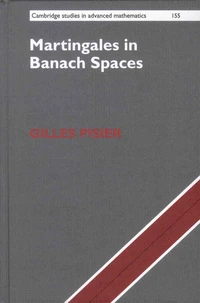Introduction to Operator Space Theory
Par :Formats :
- Paiement en ligne :
- Livraison à domicile ou en point Mondial Relay indisponible
- Retrait Click and Collect en magasin gratuit
- Nombre de pages482
- PrésentationBroché
- Poids0.635 kg
- Dimensions15,0 cm × 22,7 cm × 2,3 cm
- ISBN0-521-81165-1
- EAN9780521811651
- Date de parution01/12/2003
- Collectionlondon mathematical society le
- ÉditeurCambridge University Press
Résumé
The theory of operator spaces is very recent and can be described as a non-commutative Banach space theory. An " operator space " is simply a Banach space with an embedding into the space B (H) of all bounded operators on a Hilbert space H. The first part of this book is an introduction with emphasis on examples that illustrate varions aspects of the theory. The second part is devoted to applications to C*-algebras, with a systematic exposition of tensor products of C*-algebras. The third (and shortest) part of the book describes applications to non-self-adjoint operator algebras and similarity problems. In particular, the author's counterexample to the " Halmos problem " is presented, as well as work on the new concept of "length" of an operator algebra.
Graduate students and professional mathematicians interested in functional analysis, operator algebras, and theoretical physics will find that this book has much to offer.
The theory of operator spaces is very recent and can be described as a non-commutative Banach space theory. An " operator space " is simply a Banach space with an embedding into the space B (H) of all bounded operators on a Hilbert space H. The first part of this book is an introduction with emphasis on examples that illustrate varions aspects of the theory. The second part is devoted to applications to C*-algebras, with a systematic exposition of tensor products of C*-algebras. The third (and shortest) part of the book describes applications to non-self-adjoint operator algebras and similarity problems. In particular, the author's counterexample to the " Halmos problem " is presented, as well as work on the new concept of "length" of an operator algebra.
Graduate students and professional mathematicians interested in functional analysis, operator algebras, and theoretical physics will find that this book has much to offer.





